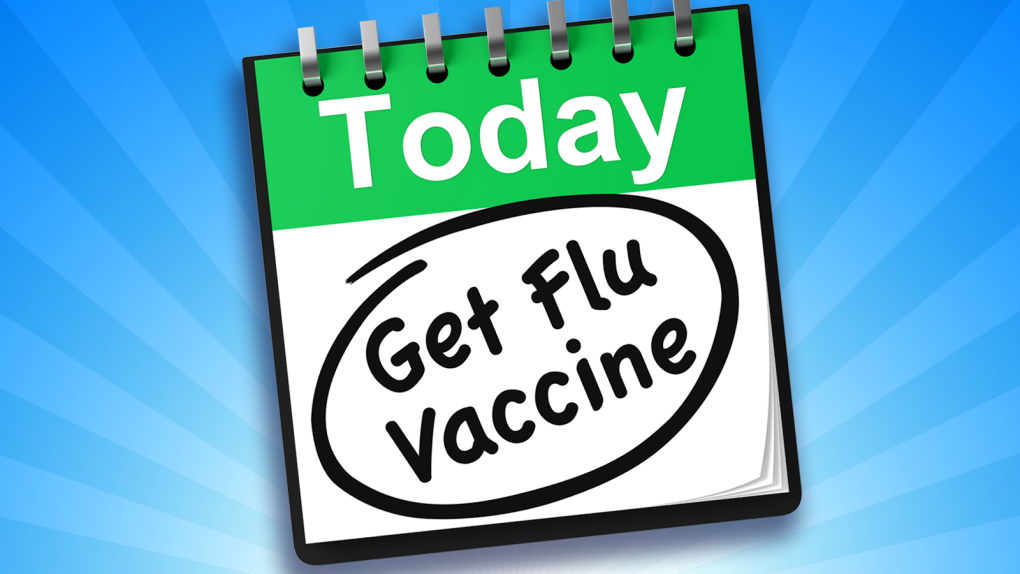-and-
Anyone can get sick with the flu. Flu viruses typically spread in fall and winter, with activity peaking between December and February. Getting vaccinated in the fall can lower your chances of getting the flu.
Source: U.S. Food and Drug Administration
Flu is a serious disease that can lead to hospitalization and even death. Every flu season is different. Your best defense against the flu is to get an FDA-approved vaccine every year. To find a flu vaccine near you, visit this page.

The Centers for Disease Control and Prevention estimate that during the 2023-24 U.S. flu season, there were:
- 35 million to 65 million flu illnesses.
- 16 million to 30 million flu-related medical visits.
- 390,000 to 830,000 flu-related hospitalizations.
- 25,000 to 72,000 flu-related deaths.
The CDC estimates that during the 2022-23 season, flu vaccination prevented:
- 6 million influenza-related illnesses.
- 2.9 million influenza-associated medical visits.
- 65,000 influenza-associated hospitalizations.
- 3,700 influenza-associated deaths.
Compared with past seasons, the severity of the 2022–23 flu season was considered moderate, with high severity observed among children.
A Flu Vaccine Is the Best Prevention
The CDC recommends that people ages 6 months and older get a flu vaccine, ideally by the end of October. Even if you wait until after October, the vaccine will still be beneficial and provide protection. For more information on recommendations, visit this CDC page.
If you have already been sick with the flu this season without getting vaccinated, getting a flu vaccine is still important because it helps prevent disease caused by three different strains of flu viruses. You likely were infected with one type of flu virus strain, so the vaccine would offer protection against the strains that you haven’t already had.
Flu viruses are spread by droplets when people infected with the flu cough, sneeze or talk. Flu may also be spread when a person touches a surface or object that has flu viruses on it and then touches their own mouth, nose or eyes. You also can reduce the spread of the flu and its effects by taking practical measures such as washing your hands, covering coughs and sneezes, and staying home when you’re sick.
-and-
Why We Need a New Flu Vaccine Every Year
The FDA plays a key role in ensuring that safe and effective flu vaccines are available every flu season. Flu vaccines are approved by the FDA for the prevention of influenza disease caused by three different influenza virus strains.
The vaccine typically changes each year and contains the three flu virus strains that are expected to circulate and cause illness in the U.S. during the upcoming flu season. The effectiveness of influenza vaccines varies depending on several factors, such as the age and health of the recipient, the types of circulating influenza viruses, and the degree of similarity between circulating viruses and those included in the vaccine.
The flu vaccine will trigger your immune system to produce antibodies to protect against influenza disease — it will not make you sick with the flu. It can take about two weeks after vaccination for antibodies to develop in the body, which is an important reason to get your flu vaccine early, before flu activity starts.
The task of producing a new vaccine for the next flu season starts well before the current season ends. For the FDA, it’s a year-round initiative.
There are several reasons a new flu vaccine must be made each year. Flu viruses can change from year to year, so the vaccine is updated to protect against the influenza virus strains that are expected to circulate in the U.S. In addition, the protection provided by the flu vaccine a person received in the previous year will diminish over time and may be too low to prevent influenza disease into next year’s flu season.
Who’s Most at Risk of Getting Sick with Flu
Anyone can get sick with flu. Typically, children and people age 65 and older are most at risk of developing serious complications from influenza. In addition, pregnant people and those with certain chronic medical conditions are also most at risk of complications.
The best way to protect babies who are too young to be vaccinated is to make sure the people around them are vaccinated. Occasionally, a flu virus will circulate that disproportionately affects young and middle-age adults.
If you do get the flu, there are FDA-approved antiviral drugs, available by prescription, to treat it. There are several FDA-approved antiviral drugs recommended by the CDC for use against circulating influenza viruses. These drugs work best if started soon after the onset of symptoms (within 48 hours).
-and-
How Vaccine Flu Virus Strains Are Selected
Every year, in late February or early March, before that year’s flu season ends, the FDA, the World Health Organization, the CDC and other public health experts collaborate on collecting and reviewing data from around the world to identify the flu viruses likely to cause the most illnesses during the next flu season.
Following that process, the FDA convenes its vaccines advisory committee, consisting of outside experts, to discuss the WHO recommendations and to consider which flu viruses are expected to circulate in the U.S. The committee reviews data about which flu viruses have caused illnesses in the past year, how the viruses are changing, and disease trends for the U.S. The FDA takes that information into account before it selects the virus strains for those manufacturers that have an FDA-approved influenza vaccine to include in their updated vaccine for use in the upcoming U.S. influenza season.
The closer the match between the vaccine virus strains and the circulating virus strains causing disease during flu season, the better the protection that the flu vaccine provides. Although the vaccine and circulating viruses may not be an exact match in some years, that does not mean the vaccine is not benefiting people. Available data show that the vaccine can reduce the severity of illness in people who get vaccinated but still get sick.
FDA-Approved Flu Vaccines Are Safe
A rigorous evaluation of laboratory and clinical trial data was conducted by FDA scientists and physicians to determine the safety and effectiveness of the influenza vaccines for initial approval. If a vaccine meets the FDA’s scientific and regulatory standards, it receives an FDA approval.
To ensure that updated seasonal flu vaccines are safe, effective and of high quality, the FDA prepares and provides reagents (materials to standardize vaccines) to those manufacturers that have an existing FDA-approved influenza vaccine to ensure that they can make their updated influenza vaccine and to verify its identity and potency. The FDA also inspects manufacturing facilities regularly and evaluates each manufacturer’s vaccine annually before it can be approved for use for the upcoming flu season.
The FDA’s oversight doesn’t end there. After manufacturers have distributed their vaccines, the FDA and CDC work together to routinely evaluate reports of adverse events following vaccination submitted by vaccine manufacturers, health care professionals and vaccine recipients (or their parents/guardians) to the Vaccine Adverse Event Reporting System (VAERS).
Additional systems are in place to monitor the safety of vaccines. The FDA partners with private organizations that collect health care data (such as health insurance companies) and other federal agencies (such as Centers for Medicare & Medicaid Services, Veterans Health Administration and CDC) to further evaluate the safety and effectiveness of the influenza vaccines.
The Biologics Effectiveness and Safety (BEST) System is one of the programs the FDA utilizes to assess vaccine safety and effectiveness in real-world conditions, reflecting patient care and the real-world use of the influenza vaccine and other vaccines in use in the U.S. In addition, the CDC maintains the Vaccine Safety Datalink (VSD) program, which evaluates the safety of vaccines similar to the BEST System. VSD receives its data from integrated health care organizations in the U.S.





